#lolita jumper
Text

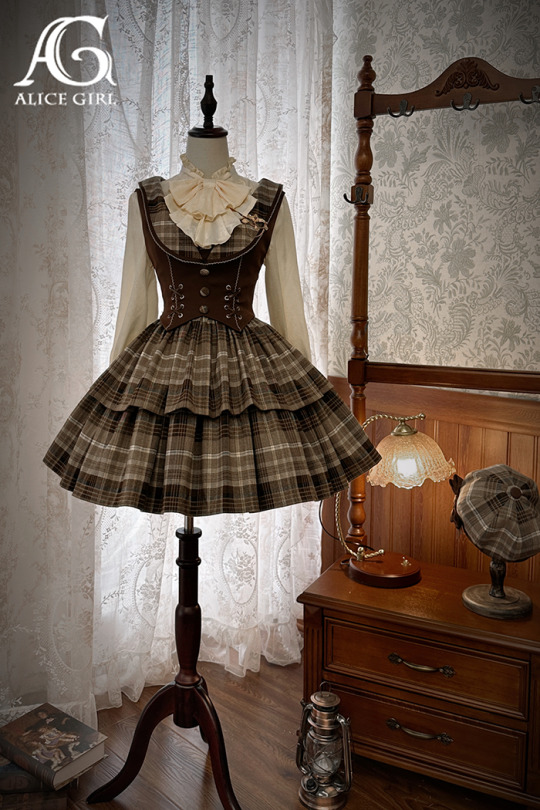


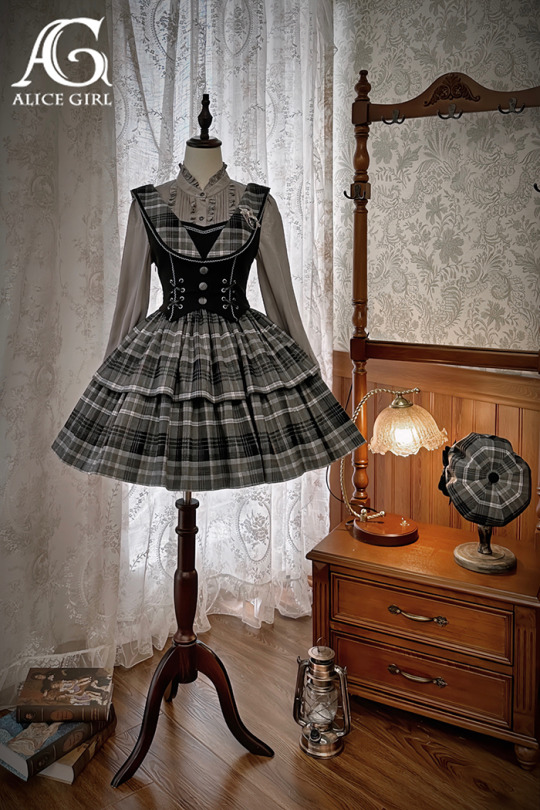


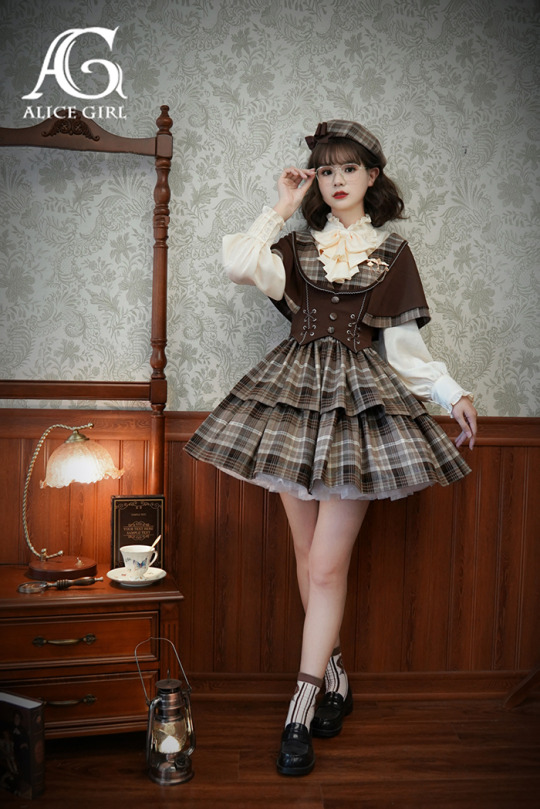


Alice Girl 【-The Academy of Detective-】 Lolita Jumper Dress and Cape Set
◆ Shopping Link >>> https://www.lolitawardrobe.com/alice-girl-the-academy-of-detective-vintage-classic-lolita-jumper-dress-and-cape-set_p7984.html
#lolita fashion#lolita dress#lolitawardrobe#alice girl#lolita jumper dress#lolita cape#vintage lolita#classic lolita
507 notes
·
View notes
Text
youtube
Not my channel, but if you're looking on how to make a Jumper skirt for yourself, here's a fantastic tutorial!
@20dollarlolita
#jsk#egl lolita fashion#gothic lolita#jumper skirt#skirt dress#dress#diy dress#sew your own dress#sewing#fashion#jfashion#Youtube
26 notes
·
View notes
Text
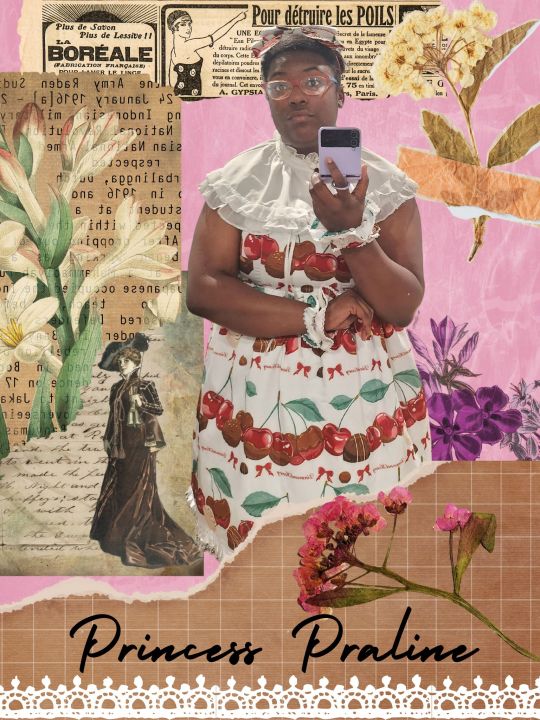
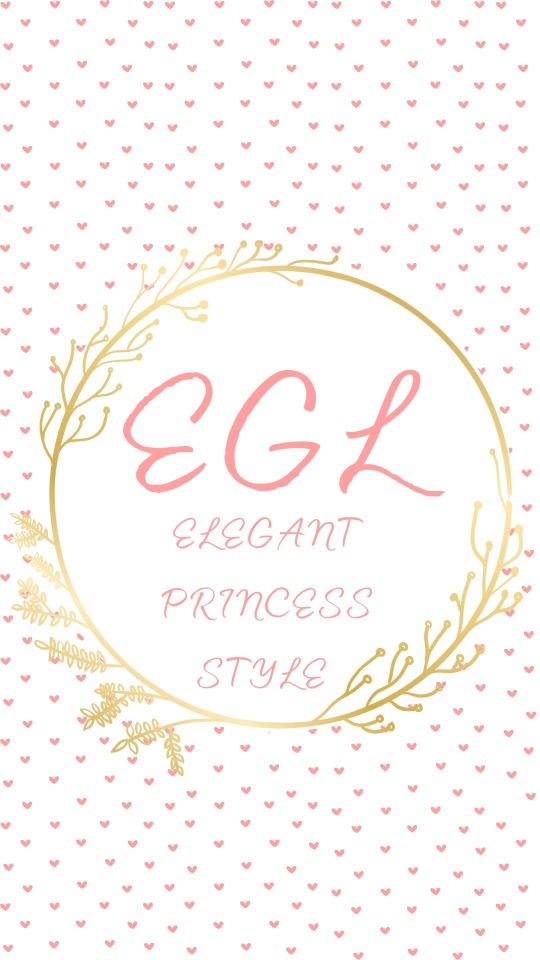
It may be too hot to wear a blouse but it's not too hot to be decent, so I just put this shoulder drape on to cover my shoulders in a jsk. Not showing my legs cus it was too hot for otks.
#jsk#gothic lolita#egl wardrobe#lolita coord#sweet lolita#egl lolita#lolita jsk#jumper skirt#jfashion#kawaii#egl fashion#egl coord#egl community#eglstyle#egl
16 notes
·
View notes
Text
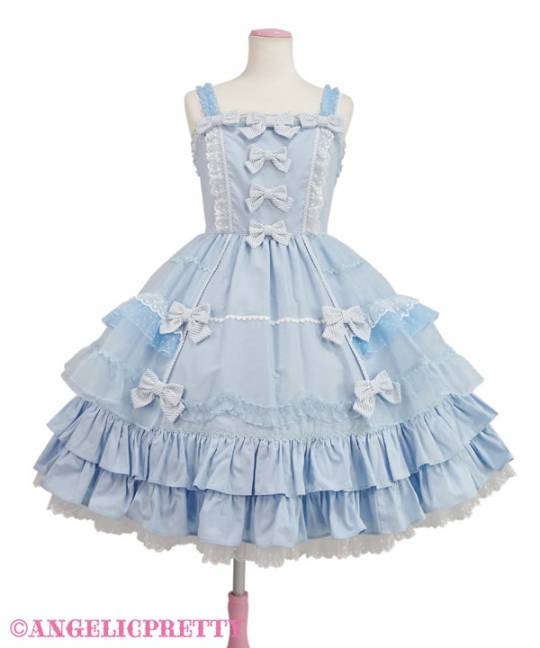
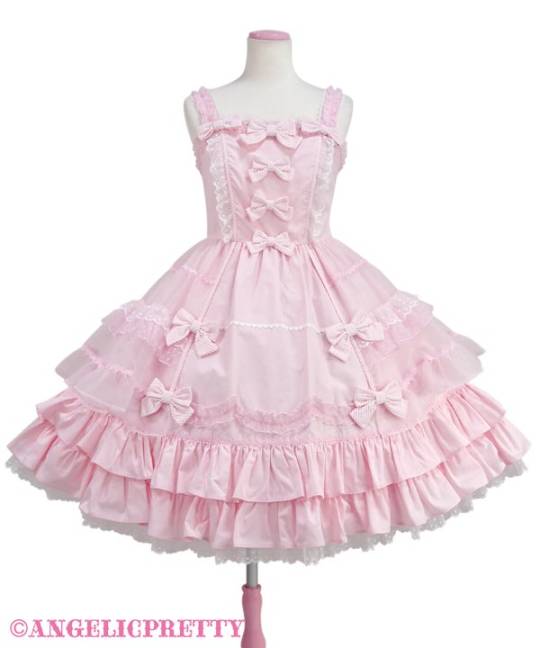
Angelic Pretty Candy Striped Ribbon JSK in sax and pink
#ghosts posts#egl#egl fashion#eglstyle#japanese street fashion#lolita dress#j fashion#japanese fashion#lolita fashion#japanese lolita#lolita jsk#lolita jumper skirt#lolita jumperskirt#angelic pretty#bows#poofy dress#sax blue#saxxe blue#pink and blue#baby pink#baby blue#pretty dress#princess dress#haunted clothes
19 notes
·
View notes
Text
Lolita Fashion Questions
Can anyone who owns a lolita jumper skirt show me what it looks like on the inside and really go into detail about the feel of them? What do they feel like without a blouse? What do petticoats feel like, are they scratchy, soft, rough, itchy? Are cotton jumper skirts rough, scratchy, soft, itchy? Can you feel the outside fabrics on the inside? Are there seams on the inside? Are they tight? If they are, can you breath easily in them and have a bloated stomach without any pressure? With a blouse, do you feel the seams, outside details, etc. against your skin? Are shoulder straps tight, are they comfortable? Are the sides that go in or near the armpits comfortable? Do you feel them and what do you feel? What does the outside fabric of the jumper skirt feels like on your arms after wearing it for a long time? Are petticoats heavy? etc.
Those questions are really important and need precise answers because I have sensory issues and am interested in lolita fashion. Wanna know if I could wear them.
Please be as precise as possible, if you can feel the seams and the outside details a little, then mention it clearly please. Can’t find answers to those questions anywhere that’s why I’m asking.
Thank you in advance to anyone answering.
#lolita#lolita fashion#lolitafashion#jumper skirt#lolita dress#petticoats#petticoat#lolitapetticoat#lolita petticoat#lolita jumper skirt#jsk#lolita jsk#lolitajsk
6 notes
·
View notes
Text
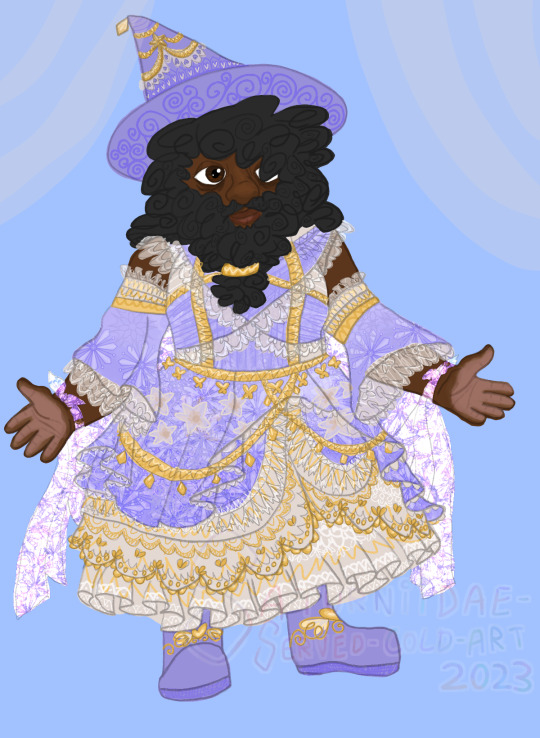

Juno in this dress. Bramble Rose -Hua Xian Qu LouLan- Lolita Jumper Dress Set. Its very hard to draw.
[Id: 1. Drawing of an elderly short black man wearing a wizard hat and a fancy lavender, white and gold lolita fashion dress with a print of white flowers and crystals and many layers of translucent lace. 2. Photo of the dress on a mannequin. /end id.]
#my ocs#oc: juno the wizard#lolita fashion#Bramble Rose -Hua Xian Qu LouLan- Lolita Jumper Dress Set
5 notes
·
View notes
Text


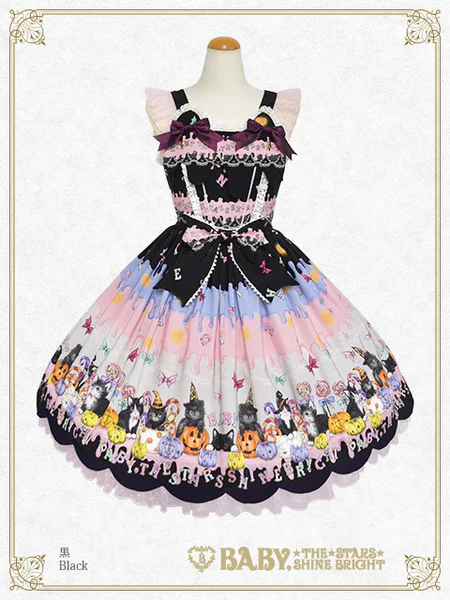

♥ Soirée Au Chat Noir Scallop Jumperskirt - Baby, the Stars Shine Bright ♥
#sweet lolita#egl#egl fashion#lolita dress#lolita fashion#btssb#baby the stars shine bright#colorway#jsk#lolita jsk#jumper skirt
1 note
·
View note
Text
youth culture today is so paedophilic. like all the other emos i spent my teenage summers in skinny jeans and stripy jumpers, and teenage girls today are pushed to look sexy coquette lolita bimbo instagram baddie kardashian vibes
634 notes
·
View notes
Text

From the first Gothic Lolita Bible, 2001, Mana was wearing the Moi-même-Moitié Velveteen Frill Long Jacket and Jumper Skirt in blue, with a mini pannier underneath, OTK socks and a Coffin Beads Ring. "Frills overlapped many times are luxurious."
196 notes
·
View notes
Text
Finding Your Style, Part I: Shape & Silhouette
A deep dive into deciding on your own personal fashion and tailoring your clothes to fit.
Also on Patreon / / Also on Medium / / Leave a tip.
Introduction
Before I start with the actual meat of this piece, I want to establish what this series of guides is not going to be. These guides are going to be about building and cultivating your wardrobe and accessories for you and your preferences.
I have no interest in and will not be going into how to look good (or revoltingly, how to look “slimmer” or similar), how to be fashionable or trendy, or alternatively, how to look unique or dress differently to everybody you know.
I often get frustrated when pieces about cultivating one’s personal style stumble across my dashboards and they advise the reader to pay attention to the latest trends, to make a moodboard, cultivate a capsule wardrobe, and leave it at that — a moodboard can be helpful if you’re a visual thinker, and there’s nothing wrong with a capsule wardrobe as a tool, however.
I have a particular style of dress, I like to play around with a lot of colours and fabrics, a lot of patterns, and a lot of the people around me tell me I dress well and that they enjoy my style: I have never read a style guide that is envisioning a man who dresses like me, or even a man who dresses even close to the way I dress.
When I think of someone’s personal style, I’m talking about aspects of their appearance and the mode in which they clothe and carry themselves that are distinctive to them.
Firstly, this doesn’t mean that they dress uniquely, and like no other person around them.
I know guys who basically dress themselves to match mannequins in particular stores, and they look good for it — when I see them around, even if I haven’t seen those mannequins and don’t shop in the stores they shop from, what makes them distinctive is particular colour palettes, brands, and also a clean-cut, neat style that works really well on a shop mannequin. What they’re wearing obviously isn’t unique, but it is distinctive, and it is a particular visual I associate with them when I see them.
Secondly, when we think of distinctive qualities, I might associate them with a specific style that isn’t inspired by a high street store or particular fashionable brand — people who dress in vintage clothes and are always kind of ’90s or ’70s, or people who dress in lolita or goth or emo or cottagecore or identify with another subculture that has a particular visual signature.
Apart from fashion subcultures, there might be other aspects — yes, specific high street brands, but there are all kinds of other visual signatures like particular patterns (someone who always wears stripes, for example), other brands or media (e.g. someone who wears a lot of stuff printed with anime characters), particular places or hobbies, et cetera. I’m currently fleshing out my wardrobe and trying to find a lot more pieces that are nautical or sailing themed, so there are a lot of anchors, compasses, helm’s wheels, and ships incorporated into my wardrobe.
And thirdly — this is one thing I want to impress very firmly, because far too many pieces that focus on fashion don’t take this into account at all — one of the most distinctive qualities is how much I might recognise a friend’s specific needs for comfort in their style of dress.
I, for example, have a lot of cardigans, jumpers, woollen vests and waistcoats, etc, and in winter will often appear in multiple layers of wool underneath another layer of leather because I get cold so easily; even in summer, I’m often wearing a t-shirt under a collared shirt, sporting a cardigan, or even wearing three-piece suits. I know other people who basically from spring through to late autumn will only ever be wearing one layer, particularly just a t-shirt or long-sleeved shirt, because they overheat so easily.
This is going to be a series of pieces, and I want to focus on a handful of specific points to focus on in cultivating your wardrobe and accessories:
Part I: Shape and Silhouette
Part II: Fabrics and Materials
Part III: Colours and Patterns
Part IV: Garments and their Construction
Part V: Accessories and Details
Part VI: Eras & Epochs, Subcultures & Alternative Looks
Part VII: Thematic Cohesion
Part VIII: Editing and Adding to your Wardrobe
A lot of style guides are written with people in mind who are trying to look good at work, especially at office jobs, and subsequently they assume a certain level of conformity with business casual or other “acceptable” styles in mind, where standing out to any degree is considered in poor taste, but more importantly, where things like personal comfort aren’t taken into account.
Your personal comfort in the clothes you wear, whether that’s to do with your resting temperature, if you feel most comfortable in any specific fabrics or textures, if you feel comfortable under multiple layers or only one, how many pockets you have and how accessible those pockets are, how exposed or free certain parts of your body are, etc, is far more important than virtually any other aspect in selecting your wardrobe.
There are absolutely garments or styles where you might either enjoy the discomfort or think it’s worth withstanding for the visual effect, but that’s really up to you to decide, and anyone who says that you should be uncomfortable on your day-to-day, or that it’s normal and therefore desirable to feel uncomfortable in your own clothes, is a prick.
As a species, we wear clothes to keep our bodies warm and safe from harm, and while we might enjoy looking good or projecting a particular image, our comfort, safety, and our feeling of security in the clothes we’re wearing is no less vital.
Especially if you’re used to dressing in uncomfortable clothes, it can be hard to figure out what you actually do feel comfortable in, and that’s okay, that’s a process.
A lot of us have basically had it embedded into us, after years of conditioning, that there is only one way to dress, one way to exist, and that this is in-keeping with what’s Appropriate or what’s Pretty or in line with any other expectation, and unlearning that is hard, but it’s a process, and it’s possible to work through it.
Shapes & Silhouette
The first thing we often talk about when it comes to fashion, and the first thing a lot of clothes designers sketch out and visualise, is silhouette — if you find that hard to envisage, imagine yourself in whatever outfit is a favourite of yours, that you’re behind a canvas, and you’re being backlit from behind.
Your silhouette is the shadow cast by the shape of your body and your clothes — when someone first enters into a room, when we take in their outfit, we take in the broad strokes of it and the silhouette it casts, the shape of their body.
You might want to cast an initial impression that emphasises particular bodily qualities you’re proudest of, makes you seem taller or shorter than you are, slimmer or fatter, curvier or squarer, softer or more angular.
The problem with a lot of silhouette discussion is that many clothing designers abhor and loathe clothing anyone who isn’t a white, thin cisgender woman: imagining silhouette becomes about imagining a base body that serves as a mannequin and clothes that are draped on her, rather than about imagining a range of body types and different silhouettes that might go with them, complementing or contrasting the base body on which they’re built.
Subsequently, when people talk about clothing for fat people, particularly for fat women, a great deal of emphasis is placed on a silhouette that attempts to disguise or hide the body’s natural shape, whether that means making them seem nebulously slimmer by increasing their perceived height or by some other method, or increasing or decreasing their curviness.
The problem with that, apart from the fact that it relies on a vociferous hatred of fat people, of fat people’s bodies, of body fat in general, an odious bigotry in itself, is that a lot of the time, it doesn’t fucking work.
It’s instead people writing pages upon pages of advice on how to make yourself appear smaller and lesser, capitalising on people’s taught and conditioned self-loathing, and a lot of it is just clickbait. I’m by no means saying it would be ethical or correct if a lot of this advice did work, but the fact is that it doesn’t.
Someone might take your outfit with lots of layers and rounded shapes to it and assume you’re fatter than you in fact are, because multiple layers make you look larger — it could also be that simply wearing those soft fabrics make people think that you’re rounder, which they associate with fatness. In contrast, someone might take an outfit with lots of angles to mean that you’re bigger than you are because when we drape our body with angular clothes, they often work by sticking out from our body and creating corners where they don’t exist — but, people might associate that angularity with a lack of body fat, either with bones or with muscle, and therefore think you are bigger, but less fat.
We live in a fatphobic society where people make a lot of judgements based on how fat they perceive you as being. Because of the aforementioned fatphobic society, we also live in a society where people might associate you with fatness (or some other physical trait they consider negative) because they dislike you.
If you speak loudly or “a lot”, people might perceive you as being fatter than you are — if you barely speak, they might perceive you as being thinner, because you take up less apparent space, no matter what you wear or what shape you present.
There is no way to win, is my point.
You cannot win against bigotry in a fundamentally bigoted society by trying to change subtle perceptions of angle or size or light or shadow, and the people who say that you can are lying. The point of those lies is firstly to sell newspapers and screentime, but the second of them is to make the reader think that a bigoted society’s attitude toward them is their fault, because they weren’t employing enough tricks to deter the bigotry.
When I talk about the varieties of silhouette you might want to attain or aim for in your clothing choices, or how well-fitting or loose a garment might be for you, it should be in line with your preferences and your desires, whether that’s about aesthetic, comfort, or something else.
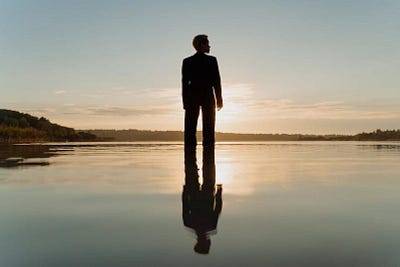


Photo by cottonbro studio via Pexels, with guide lines added by me.
When envisioning your silhouette, the key points of your body might be:
your head
your shoulders
your waist and hips
your feet
This depends on your body shape and also on the sorts of outfits you’re wearing — it might change for you depending on the clothes you’re wearing on a given day, or you might cut a drastically different silhouette in boymode versus girlmode, or in summer versus winter, etc.
Think of these as anchor points on which your clothing or accessories are draped over or mounted from, almost like you might envision armour slots in a videogame. When you envision your silhouette, it’s how your body immediately appears when lit from behind — your legs and arms aren’t irrelevant here, and the shape of sleeves, trousers, and skirts will absolutely contribute to your silhouette, but depending on your body in motion or how you stand, these won’t always be immediately distinctive, whereas your head and torso will be.
As well as being the place where your clothes drape from, these might be the points where your most important accessories might be placed — headbands or hats, shoulder clasps or shawls or collar pins and such, belt buckles or suspender clips, and your shoes or boots. These points become the focus to which the eye is drawn because they’ll be the most static parts of the body, whereas other parts in between might jiggle or flow.
These points aren’t part of some sort of rule you have to follow — it’s more of a handy shorthand to help train your eye into seeing the particular shapes each part of someone’s body cuts, and what the overall effect is, and how much you like or dislike the effect.
You might feel that some of these anchor points, when emphasised or de-emphasised, add or take away from your dysphoria or your general self-esteem, make you feel more feminine or masculine, just look really fucking cool or really hot, etc. Think about those when you start sketching out your shapes in your head and what you like best.
When you really want to imagine a silhouette, do what I did with the first three images — there’s the outfit itself, I’ve drawn the anchors at the top of the head, the top of the shoulders, the waist, and then the feet. Contrast that silhouette with this image:


Photo by Becerra Govea Photo via Pexels, with guidelines added by me.
This person has a different hair style, but see how with the shape of the dress, the waistline is drawn in compared to their shoulders, and would be even if they weren’t posed with their elbows outward? See how their waist appears to be smaller in contrast with the wide sweep of the thickly layered, loose skirts?
A useful exercise when thinking about a silhouette you like is to draw these anchor points and then either draw in lines following the outside of the body’s / clothing’s shape, or you can separate into each section and think about the simplest shape that silhouette can be boiled down to: a circle, a square, a triangle, a straight line.
In the two images I’ve indicated, I’ve focused on the waist as an anchor point because it’s the base of the suit jacket and then where this dress is drawn in — on your body, you might find that somewhere else on your pelvis is better for you to draw the line.
Have a look at this TikTok and look at all these bodies in motion, the clothes they’re wearing, how much skin is or isn’t being revealed, how loose or fixed each piece of clothing is, how much contrast is or isn’t present in the different shapes on show. Think about each different silhouette and how different or similar they are to one another.
(A TikTok of an NYFW fashion show in September from Remi Jo on TikTok.)
Look for the motion in these garments and in these people’s bodies — the parts that jiggle, that flow, that have free motion — and contrast them with the bits of their garments or bodies that remain more static. Many of these garments bare skin or flesh, and many of them cover a lot up, depending on the garment’s design — look at shoulder pieces, busts, waists, skirts, hemlines, sleeves. If a garment stands out to you as pleasing, cut it up in your mind and look at each piece of it individually before you consider the whole again, see what stands out most to you.
Generally, for modern men’s tailoring, the focus is often on the lower-slung hips rather than on the higher waist. If you’ve got a squarer body, your waist and hips might be the same or almost the same width, to the point you have no big distinguishing angle between the two points — you might want to think of your anchor point as at the base of your hips, in line with your backside; you might want to think of it as at the absolute high point of your waist if you tend to very high-waisted trousers or skirts.
If you’re fatter and have a significant overhang to your belly, depending on whether you like to wear your waistband underneath the overhang and have your belly rest on top / over it, or if you wear looser clothes or generally keep your belly within the waistband, for example under your dress or your skirt, this might change how you think about your silhouette too.
You might still be looking from the tops of your shoulders, but then the end of that “shape” might be in line with your backside or your upper thigh instead because that’s where you can see the lowest part of your belly in your trousers or leggings, or in a maxi dress, it might be a straight (or mostly straight) line from your shoulder down to your feet. Alternatively, rather than focusing on your hips or specifically where your waist is, you might like to make sure your middle point is at the widest point of your belly — if you’re wearing a belt, you might like the belt buckle to rest in the middle point there, or have the waistband of your skirt there so that you have the maximum flow to the skirt.
And remember, as I said about how the most key points might be different depending on what sort of outfit you’re wearing or what the occasion is, consider how much you’re going to be sitting down or from what angle you’re going to be viewed by others.
If you’re generally going to be sitting down while wearing a particular outfit, your midpoints at the waist might be less important to you than your shoulders and your feet — and if you’re going to be viewed significantly from above or below (for example, if you’re on stage or performing in a theatre), or from a further distance, this might make a difference to what key points you want to focus on.
If you use a wheelchair, depending on how big your wheelchair is compared to you in terms of its back and shape, you might like to take its angles and colours in complement to your outfit — if you use a cane or crutches, or if you wear a prosthetic limb for some events but not others, you might want to consider the asymmetry or the squarer shapes cut by your mobility aids.
Similarly, if you’re in costume and you’re wearing or using a really important prop like a stave or wand, some sort of weapon in the hand or slung on the belt or worn in some sort of other holster, you might want to employ similar complementary or perpendicular angles.
For example, if you’re wearing something that’s really angular and is going to make one shoulder, side of your head, or side of your waist/belly seem much higher than the other side, you might want to match that angular shift to the side you don’t have a limb or use a cane or have a prop to continue that exaggerated angle — you might want to make it go to the opposite way to offset the imbalance.
--
I’ve talked a lot above about how to observe and identify shapes and silhouettes in outfits you’re observing, but only a little bit about how to actually construct and cast them.
For a lot of people, the shadow cast by your head is going to be the same every day depending on your haircut or hairstyle: if you have shorter hair, you’re unlikely to change it much on the day to day in a way that will be noticeable at a glance.
If you do have longer hair or you change your style regularly, you can think about the shape that your head is casting in contrast to your outfit — if you alternate, for example, between having a big ‘fro and braids or twists that are much tighter to the head or are gathered at the back of your neck, those will be pretty dramatic differences to your silhouette; ditto if you go between different ponytails or braids and different up-dos, whether that’s a bun or gathered braid or similar.
If you wear hats and/or wear headscarves, those will make a big difference too — a beanie casts a very different shadow to a Panama hat, different again to a boater, a baseball cap, or a bandana.
A more structured hat or other garment for the head — a tiara or crown, for example, or more structured hair styles that come out from the head such as bantu knots or structured wigs and up-dos, will be more static; looser hats, scarves, and loose-worn hair will have more flow and wave when you move, and will stay in motion as you walk or even as you turn your head.
How visible do you want your neck to be? The lines of your jaw, your chin, your ears (and earrings), your brow, the nape of your neck? Do you enjoy the sensation of fabric or your own longer hair touching the tops of your shoulders, or being a weight on your back? Do you need the shade from your bangs or longer fringe, or that a structured hat will give you?
From your head we can jump to the broader part of your actual outfit or the garment that covers most of your body.
Your shoulders and your hips / waist / the widest point of your belly are where the garments you wear are going to rest — shirts, jackets, vests, coats, all of these are going to sit on your shoulders and either cling closely to your body or hang over it; loose fitting trousers and any sort of kilt or skirt are going to hang off your hips or the widest point of your middle.
Depending on your outfit and how your legs are clad, your feet might not actually be particularly noticeable — if you’re wearing shorts or anything with a shorter skirt, more attention is going to be drawn to the feet in contrast to your legs, ditto any sort of skinny trouser, legging, or tights. This goes especially for bigger boots, trainers/sneakers, and various heels.
MSCHF’s newest crowd pleaser, the Big Red Boot, is distinctive because the Big Red Boots are extremely shaped like boots, but not particularly like feet.
And after this point, you might have different points entirely that you construct away from your body — big earrings can be a point of interest; the hem of a shorter skirt, for example, might stop at your mid-thigh or knee, and that might be at an angle with your shoes; if you wear flared trousers like I tend to, you might create another point of contrast at your knee or at the mid calf.
Some points to consider are:
Which parts of your body or your shape do you enjoy most, want to most emphasise, or want to draw most attention to? Are there any parts of your body or your shape you feel less comfortable showing or emphasising, and would like to draw attention from?
Are there any silhouettes, for any gender, that you feel most drawn to and interested in? For example, do you particularly like the shape cut by certain styles of suits, robes, dresses, or other garments? What points do you like most, are most drawn to? What points are the same from outfit to outfit?
Think of cartoons and other animated series you like or have enjoyed, which normally have distinct styles and place emphasis on certain body parts or shapes for each characters. Do any particularly appeal to you? Do any characters look especially fun or cool compared to others, because of the style they’re drawn in or what garments or armour they’re drawn in? Cartoons will show an extreme, but they might help you visualise something you’re particularly drawn to because the extremity makes it so visible.
Apart from the shoulders, middle, head, and feet, do you want to create any further points of interest? Draw attention to your elbow or knees, dangling earrings, shift the silhouette of your feet by elevating your heel or sole?
Do you want your garments to hang from your body and be loose, or do you want them to be more tightly tailored? A garment that “hangs” will generally rest on your shoulders or around your middle and then be looser or boxier — a more fitted garment will hug tighter to the lines and curves of your body, and the extent to which will depend on the fabric weight and the construction of the garment.
How much is your silhouette different in motion, standing, seated, or otherwise? How much does it change with different mobility aids, or in different seats, while doing different activities?
And that’s it for that piece!
I am going to go through the other parts of this bit by bit — originally I was going to do this as one huge deep dive, but it just became untenable in terms of length. Let me know what you think, which bits are most helpful, and please feel free to mention anything you’d particularly want me to cover in the other pieces as I go through them.
135 notes
·
View notes
Text

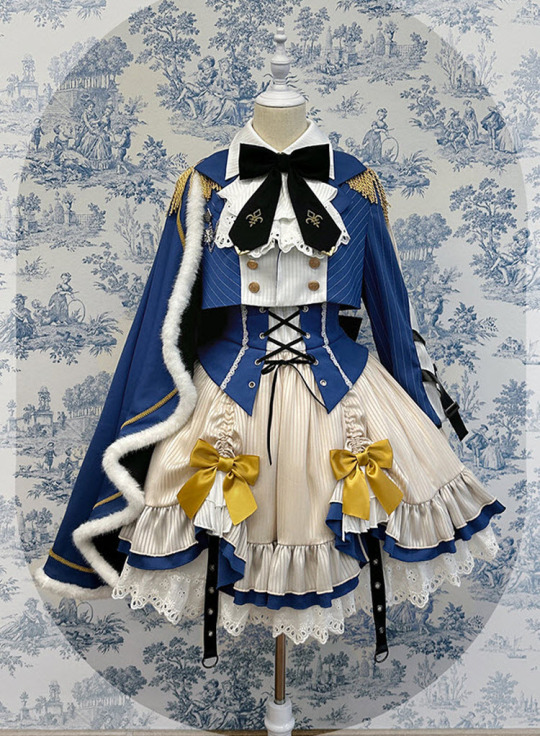
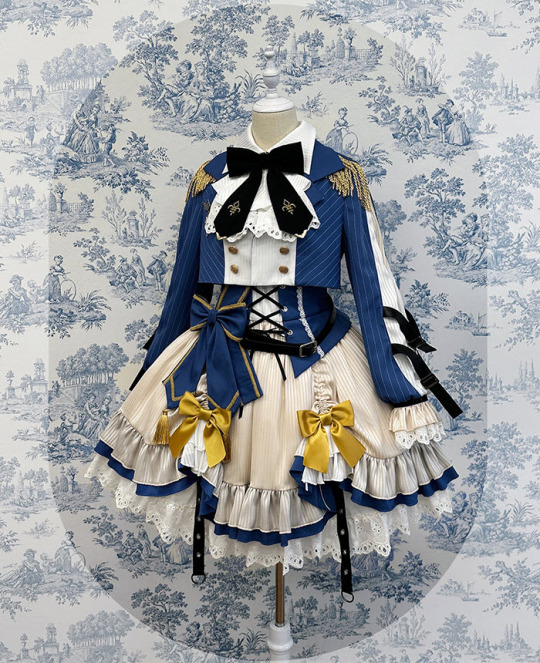
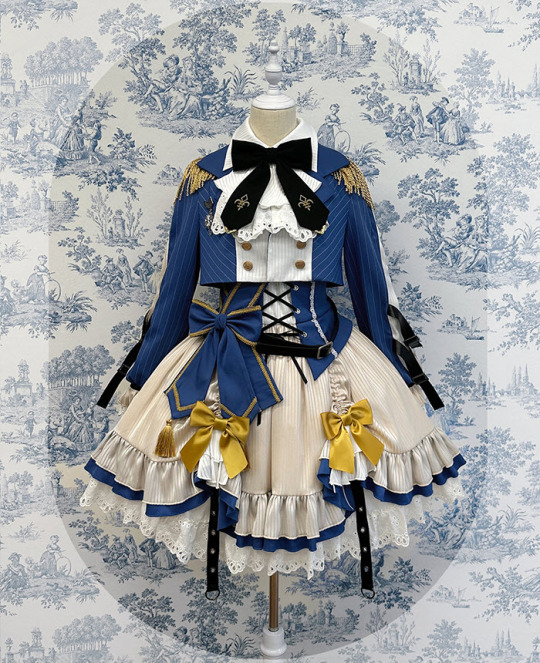


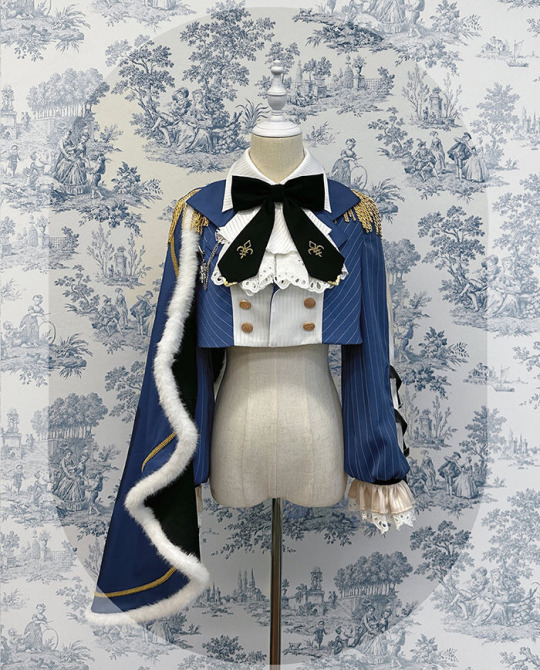
Alice Girl 【-Sailing Diary-】 Lolita Short Jacket, Jumper Dress and Cape Are Available Again.
◆ Shopping Link >>> https://lolitawardrobe.com/alice-girl-sailing-diary-sailor-lolita-short-jacket-jumper-dress-and-cape_p7622.html
504 notes
·
View notes
Text




dress up 🐇🌈‼️ (click for better quality + outfit sources under cut)
1: https://www.devilinspired.com/detective-goose-ouji-lolita-shorts.html
2: https://img1.etsystatic.com/il_fullxfull.300281109.jpg
3: https://pin.it/4rkzCcenp
4: https://us.shein.com/Rainbow-Striped-Pattern-Lantern-Sleeve-Shrug-Jumper-p-11450026-cat-1734.html?epik=dj0yJnU9MVFvVWdyLXoxanl3bGlZc0tZUTY3M1JkZTZtc1BqTXImcD0wJm49c2lGX1dlNGVpeUt5S1FiVkRyb2VPUSZ0PUFBQUFBR1hTNWtJ
76 notes
·
View notes
Text
nothing new or profound in this statement and it's on me for being an Instagram user. but all these reals I see that are like "✨ normalise wearing skirts ✨ normalise wearing jeans under dresses ✨ normalise wearing capes ✨ when did men stop wearing suits and women stop wearing dresses ✨ this is so sad ✨ 4 k likes please" like girl shut up. first of all these things are so so normal it's like these modest fashion bloggers who are like "on my modest Christlike journey 😌" when they're wearing the most normal outfit ever I promise its the WWJD bracelet telling us you're a Christian and not the fact you're wearing a jumper and a skirt and acting like it's revolutionary girl everyone wears jumpers and skirts. and even if it wasn't normalised omg who gives a shit... most people aren't going to say shit no matter what you're wearing there's a girl on campus who always wears a full on lolita maid outfit and nobody bats an eyelash. or eyelid. or whatever it is that one bats. like if you love capes so much wear them who caressssss. also always so annoying when people who dress either vintage or super glamorous on Instagram are like "here is what people act like when they see me on the streets of Paris/Vienna/Rome" and they're getting a shit ton of stares. babe it's not because of your outfit it's because you're waltzing around with a camera crew, bumping into people, filming strangers without their consent, and acting like you're the main character of Street or Road or Avenue
33 notes
·
View notes
Text

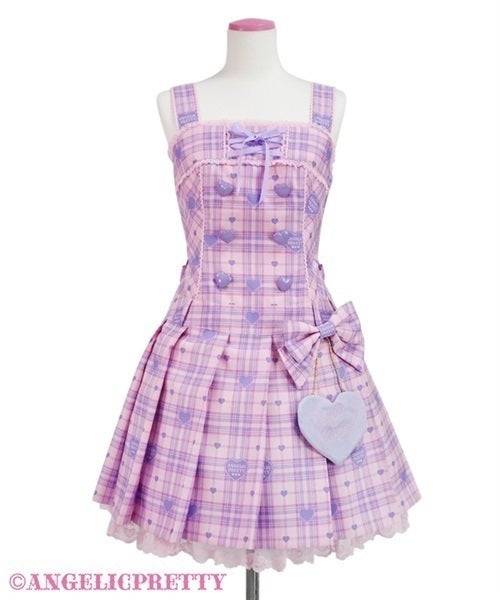

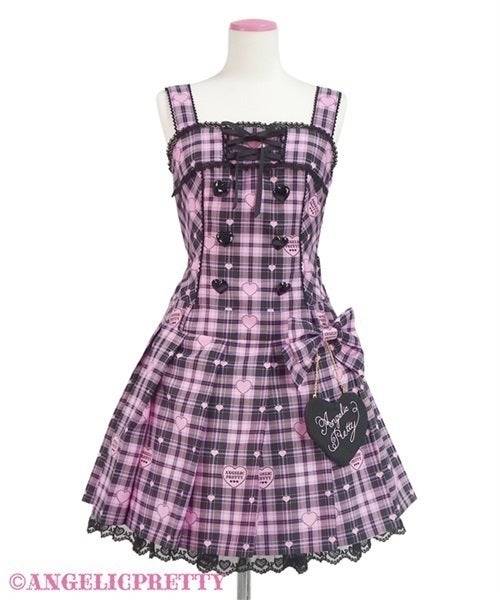
Angelic Pretty Sprinkle Heart Tartan JSK in white, pink, sax and black
#ghosts posts#egl#egl fashion#eglstyle#japanese street fashion#j fashion#japanese fashion#casual lolita#angelic pretty#jumper skirt#tartan dress#plaid dress#bows#haunted clothes
18 notes
·
View notes
Text
Recommendation for a #Ball, #Gothic look with a JSK and #shrug.
Item details here: https://www.fanplusfriend.com/petal-labyrinth-classic-lolita-fashion-elegant-sleeveless-midi-dress-casual-one-piece-false-2pcs-jumper-skirt-jsk/?fbclid=IwAR0SZ58RfmrSJUvIyQZ9KKvtga0s4Im7Tc3CpTHd2MSYJVM_-EV98fkFF_s
44 notes
·
View notes
Note
What's your process for making these? You seem to come up with these coords so fast- almost like you've got half the fashion memorized! I'm blown away at your commitment to doing the whole pokedex. I can't think of a mon off the top of my head that you haven't already done so no requests for now, just a fist bump!
Firstly thank you for the compliment. I may be rather quick but I do truly work hard on these so the love for what I do is always appreciated 💕
As for my process, you are kind of right about me having it memorized. Lolita fashion does have a degree of set rules for it (which while I play a bit looser with them than many hardcore lolita enthusiasts) that I have memorized.
A standard outfit contains:
An OP (dress) or JSK (a jumper skirt/sleeveless blouse)
A blouse if using a JSK
Stockings
Shoes (traditionally a variant of Mary Jane heels)
Gloves or cuffs if using short sleeves
A fascinator of some form
A wig
Purse
Assorted jewelry
I then use this set as a checklist to make a coord collage.
When working on a new Pokemon I look it up on Bulbapedia for a reference. and then start googling pieces/ looking up stuff based on the checklist and attributes of the pokemon. Other resources I use are Pinterest (but only accessories because it's banned the word lolita due to association with the Nabokov novel... and unfortunately several terms associated with the fashion FOR SOME REASON ), Lolibrary, and Etsy.
I hope this cleared some things up for you!
30 notes
·
View notes